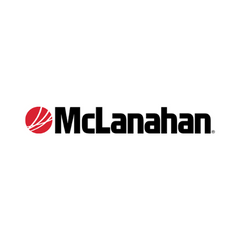“I would house twice as many cows if I didn’t have to deal with manure.” This statement by Dean Strauss of Majestic Crossing Dairy expresses a concern shared by many large dairies – effective management of waste. It can be costly, time-consuming and downright dirty.
A multitude of precautions are taken during its collection, storage and application, one of the most crucial among them being maintenance of positive public relations. Strauss and fellow Wisconsin dairy producer Jamie Larson are making notable strides in this area.
Majestic Crossing Dairy houses 1,900 cows in two facilities: one with sand bedding and another that is directly alley-scraped and dispensed in pits. A tea-water product is extracted after a three-stage sand separation and drag-lined in alfalfa fields.
The remainder of the dairy’s 3,000 acres receives direct injections of the more solid manure product, increasing organic matter and soil integrity to support corn and soybean crops.
Likewise, Larson Acres collects waste from its 2,400 cows three times daily for sand separation. Ten years ago, the family added extra washing and drying stages to recycle their bedding.
Dry waste product is spread on alfalfa fields, reintroducing phosphorous and other nutrients into the soil that were reaped during plant growth. The liquid is pumped in the spring and fall to the remaining half of Larson’s acreage, which is seeded with hay.
“Having manure to put on crops, I feel, is a lot better than buying commercial fertilizer,” Larson says. “So that is definitely a benefit to have a closed loop where you are taking the crops out to feed the cows and putting the manure back to grow more feed.”
However, even with its environmental benefits, manure application raises a number of public concerns of which farmers should be mindful. Both Larson and Strauss currently utilize a product in their lagoons to reduce ammonia-related odors.
It also has the added benefits of reducing nitrogen losses and phosphate lock-up in the field. While Larson is still waiting to evaluate its efficacy in the heat of summer, Strauss claims that neighbors have already remarked on the improvement in scent.
Keeping abreast of new technologies such as nitrogen-fixing manure additives is a hallmark of producers who make a conscious effort to continually improve their practices. However, as Larson points out, adopting new systems requires careful cost assessment.
While the 12 family members who run Larson Acres experimented with a specially tailored wastewater treatment facility to produce cleaner tea water, it proved too cost-inhibitory. However, this has not stopped their progress. They are still investigating the use of polymers to aid in solid aggregation and have plans to install a new centrifuge in their system.
“Just being able to tweak something can make a big difference in how we do things,” Larson says. “There is always new machinery and equipment that comes out that makes things better, easier and safer. We are always watching to see what is out there and communicating with companies too to tell them what we need and help them to move things in the right direction.”
Many other efforts have been made to improve community relations through manure management. Strauss points out that visual displeasure can be just as powerful as olfactory assault. For this reason, he makes sure trucks, equipment and roadways are kept clean when transporting manure.
“I think the public smells with their eyes,” he says. “You have brown in the field; you may have puddles of manure, manure and manure mud on the road, and all of a sudden, it’s not good.”
Both producers also follow strict regulations regarding the timing and quantity of application. By referring to field maps, they make sure to avoid waterways and slopes to reduce runoff. State-mandated nutrient management plans assess the needs of crops and the rates of nutrient introduction necessary to support them.
In many instances, dairy producers must maintain a delicate balance between stewardship, community and profit. Manure application is no exception. As Strauss explained, while direct injection reduces detested odors, surface application disturbs the soil less.
But establishing positive connections with the community reaches far beyond a farm’s manure-filled lagoons. Education about farm practices and demonstrating an invested interest in the well-being of those nearby are essential. For this reason, Larson distributes a biannual newsletter updating the public about changes and inviting feedback.
The family will move a scheduled manure application if it disturbs a neighbor’s outdoor activities. In addition, they host an annual neighborhood picnic, lead several hundred international tours for World Dairy Expo visitors and teach at elementary schools. The farm even distributed 3,000 cheese sticks at last year’s Fourth of July parade to promote the dairy industry.
At Majestic Crossing, the same open communication policy applies. Blog updates span a variety of topics from personal stories about the partnership’s members to promotion of community philanthropy efforts.
Currently plagued by local road deterioration, Strauss also emphasizes the importance of cooperating with legislators to fix infrastructure and express other concerns facing dairy producers.
“There aren’t that many farmers around anymore. If you don’t toot your own horn, nobody else will,” he says. “Someone else will tell us how we are not doing it right.
Ultimately, the struggle is getting that message out. We care about the environment; we care about our animals, the land and water. Some think we just sponge off the environment, and actually we are doing a lot of good things.”
The conscious effort of dairy producers to improve community relations manifests itself in many forms. Whether supporting local organizations, leading tours or pursuing political activism, the impacts of their actions are evident. However, some of their greatest efforts are those that cannot be detected, or more specifically smelled, on the mid-afternoon breeze. PD
Holly Drankhan is a senior at Michigan State University with plans to attend vet school. She is a 2014 Progressive Dairyman editorial intern.









